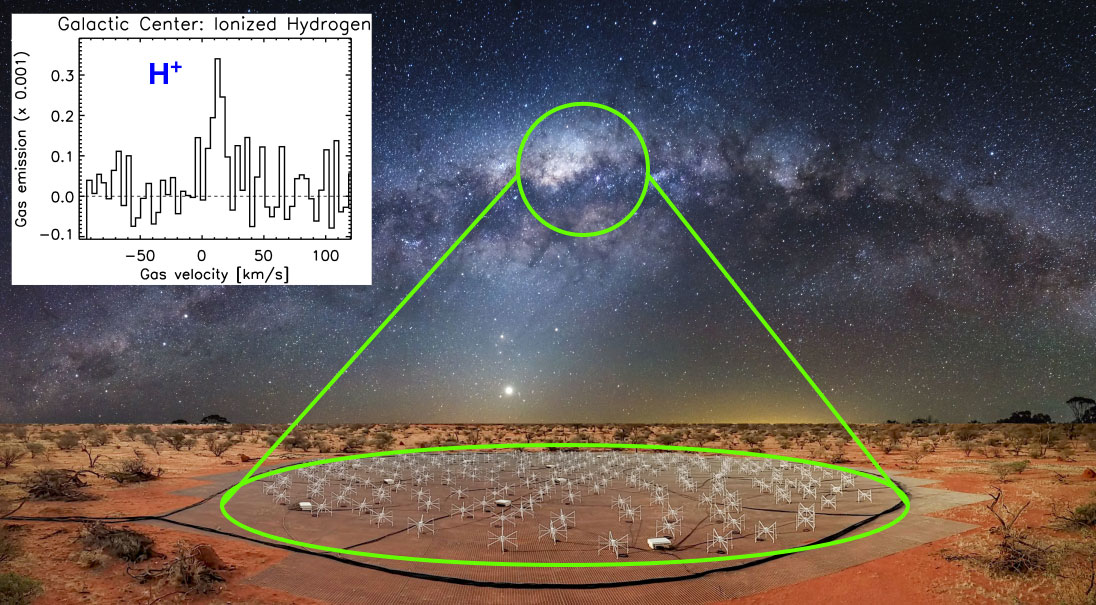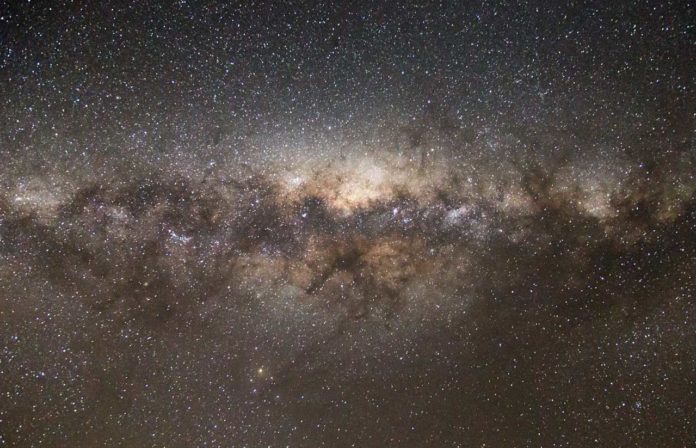For the first ever time, scientists have detected ionized hydrogen at the lowest frequency ever towards the center of our galaxy.
The discovery emerged from a cloud that is both extremely cold (around – 230 degrees Celsius) and also ionized, something that has never been recognized. This disclosure may clarify why stars don’t form as fast as they hypothetically could.
Scientists used the Engineering Development Array (EDA) to detect low-frequency radio recombination lines (RRLs) from the Galactic Centre region. The detection was made possible by the full bandwidth of the EDA and the extremely radio-quiet location of the Murchison Radio-astronomy Observatory.
Dr. Raymond Oonk of ASTRON, Leiden Observatory, said, “The possible existence of cold ionized gas had been hinted at in previous work, but this is the first time we see it.”

“This discovery shows that the energy needed to ionize hydrogen atoms can penetrate deep into cold clouds. Such cold clouds are believed to be the fuel from which new stars are born.”
“However, in our galaxy, we know that the stellar birth rate is very low, much lower than naively expected. Perhaps the energy observed here acts as a stabilizer for cold clouds, thereby preventing them from collapsing on to themselves and forming new stars.”
A/Prof. Randall Wayth from the Curtin University node of ICRAR said, “the detection was made possible by the wide bandwidth of the EDA and the extremely radio-quiet location of the Murchison Radio-astronomy Observatory.”
“The low-frequency portion of the Square Kilometre Array will be built at this location in the coming years, so this excellent result gives us a glimpse of what the SKA will be capable of once it’s built.”
Emma Alexander (University of Manchester) said, “It’s a fascinating time to be coming into radio astronomy, and it was great to work on the first high-resolution spectroscopic data from this SKA prototype station. The technologies that are being developed for the SKA and the science results that come from them will be a driving force for my generation of radio astronomers.”
This work was carried out as a collaboration between the Netherlands Institute for Radio Astronomy (ASTRON), Leiden University, the International Centre for Radio Astronomy Research (ICRAR), the University of Manchester, and the Square Kilometre Array.
Journal Reference
- Oonk, J. B., Alexander, E. L., Broderick, J. W., Sokolowski, M., & Wayth, R. (2019). Spectroscopy with the Engineering Development Array: Cold H+ at 63 MHz towards the Galactic Centre. Monthly Notices of the Royal Astronomical Society, 487(4), 4737-4750. DOI: 10.1093/mnras/stz950
